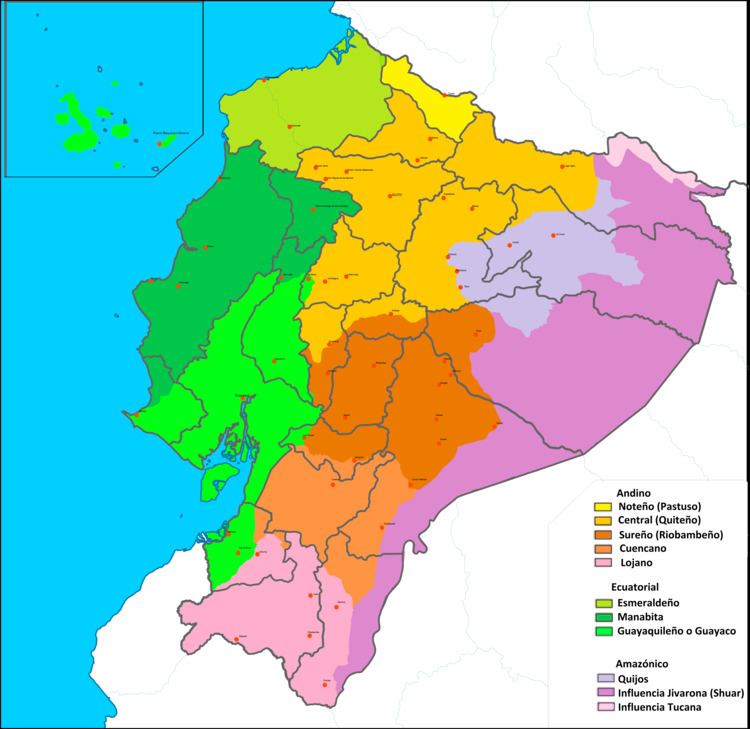 | ||
Equatorial Spanish, also called Coastal Colombian-Ecuadorian dialect or Chocoano, is a dialect of Spanish spoken mainly in the coastal region of Ecuador, as well as in the bordering coastal areas of northern Peru and southern Colombia. It is considered to be transitional between the Caribbean dialects and the Peruvian Coast varieties. The major influential linguistic centers are Guayaquil and Buenaventura. There is an important subvariety of this dialect which is spoken by most of the communities of African descent dwelling on the border between coastal Colombia (Chocó department) and Ecuador (Esmeraldas province), and which is said to reflect African influence in terms of intonation and rhythm.
The particular intonation which identifies the speakers of these regions has been a subject of study. Boyd-Bowman (1953) states that the features that he has observed show clearly a phonetic continuity along the coasts of Colombia, Ecuador, and Peru, in contrast to that of their respective Andean provinces. Boyd-Bowman observes that the present borders of Ecuador with the neighboring countries do not correspond to natural geographic boundaries, nor to linguistic/cultural boundaries (the same Spanish is spoken on both sides), nor to older political borders, whether of the Incas or of the Spanish colonies. Lipski (1994) also considers the dialect of northern coastal Peru as a distinct variety of Spanish, based on phonetic features.
Notable phonological characteristics
Equatorial Spanish presents markedly attenuated Caribbean features:
